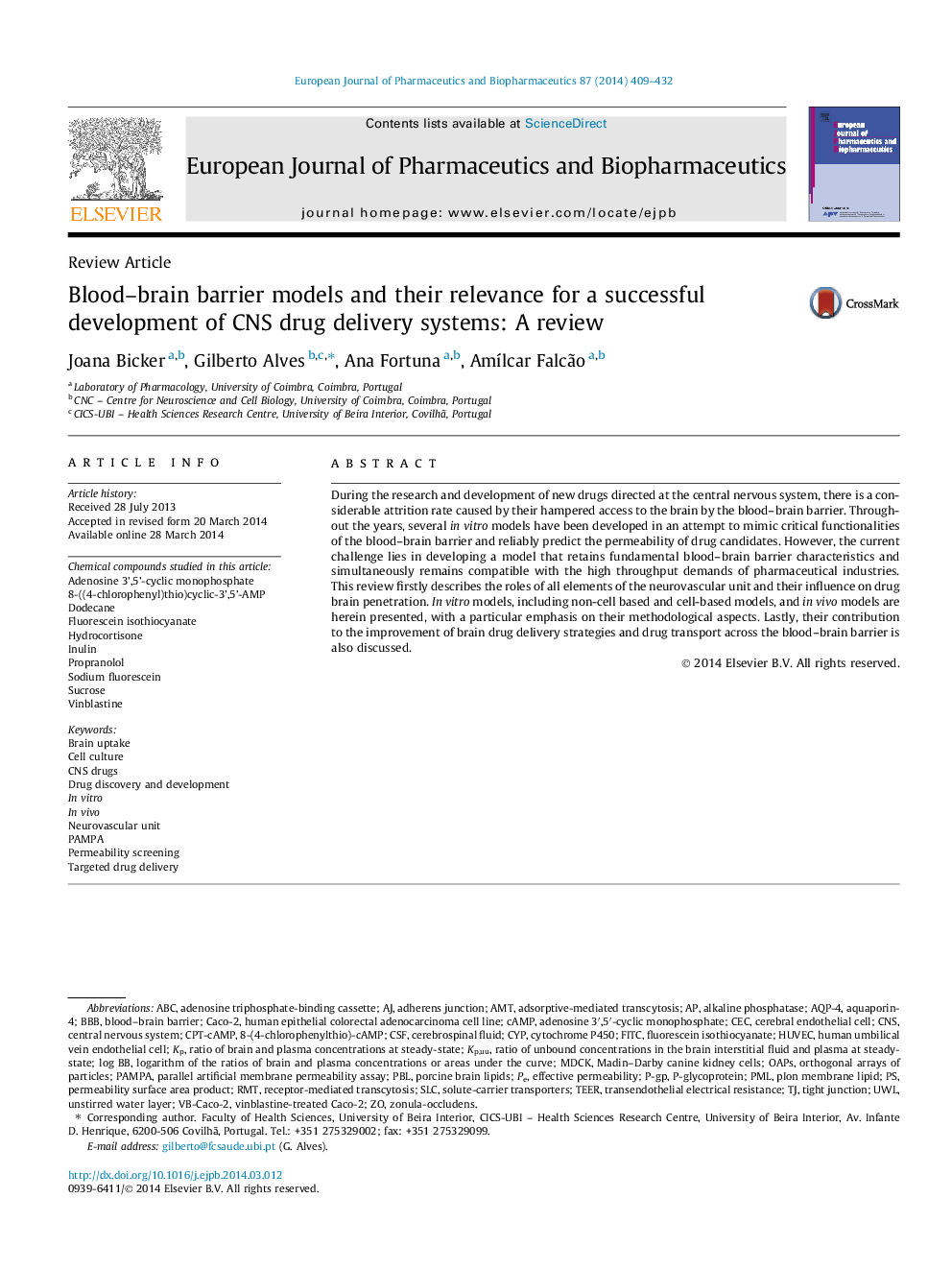| Article ID | Journal | Published Year | Pages | File Type |
|---|---|---|---|---|
| 2083973 | European Journal of Pharmaceutics and Biopharmaceutics | 2014 | 24 Pages |
•In vitro and in vivo models of the blood–brain barrier are herein reviewed.•The main advantages and limitations of each model are presented.•Their application for drug permeability screening purposes is discussed.•Their impact on the development of CNS drug delivery systems is analyzed.
During the research and development of new drugs directed at the central nervous system, there is a considerable attrition rate caused by their hampered access to the brain by the blood–brain barrier. Throughout the years, several in vitro models have been developed in an attempt to mimic critical functionalities of the blood–brain barrier and reliably predict the permeability of drug candidates. However, the current challenge lies in developing a model that retains fundamental blood–brain barrier characteristics and simultaneously remains compatible with the high throughput demands of pharmaceutical industries. This review firstly describes the roles of all elements of the neurovascular unit and their influence on drug brain penetration. In vitro models, including non-cell based and cell-based models, and in vivo models are herein presented, with a particular emphasis on their methodological aspects. Lastly, their contribution to the improvement of brain drug delivery strategies and drug transport across the blood–brain barrier is also discussed.
Graphical abstractFigure optionsDownload full-size imageDownload high-quality image (172 K)Download as PowerPoint slide
